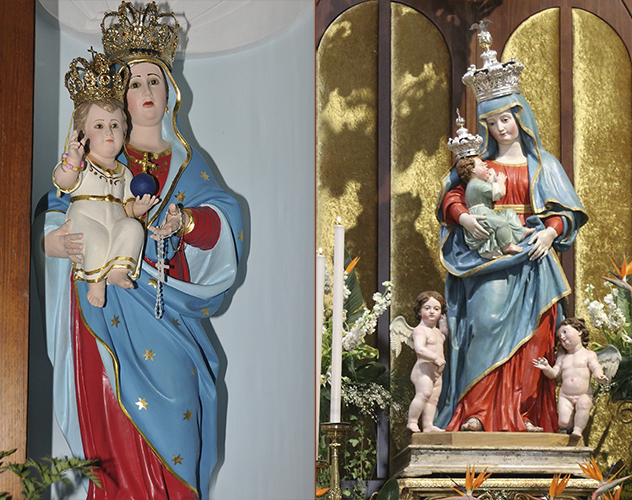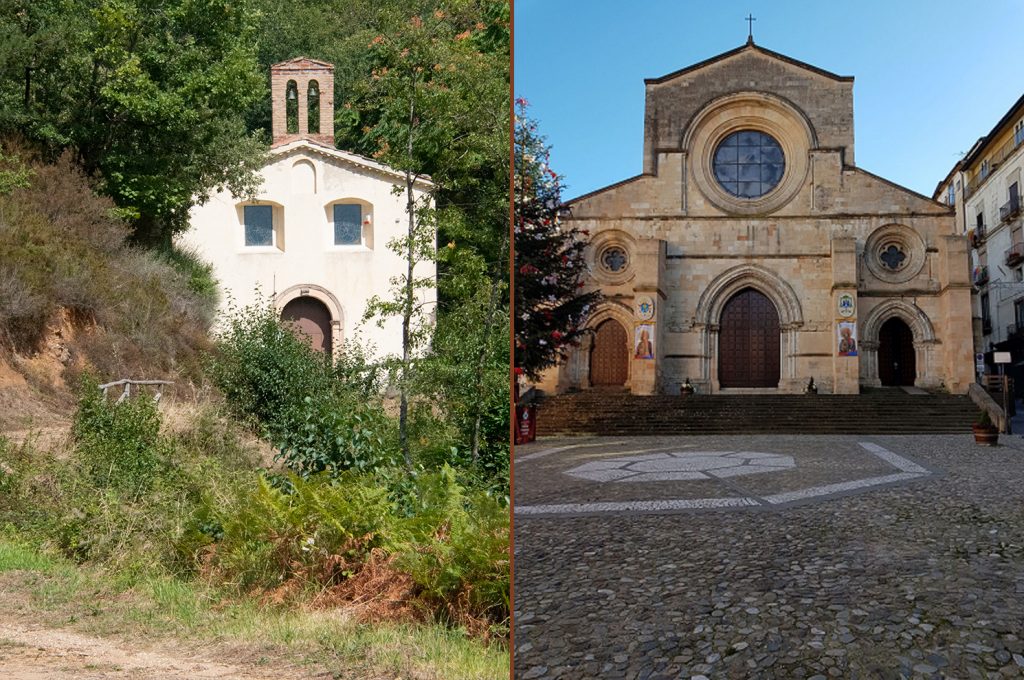fill-in-the-blanks
February 12, 2020
I left Aprigliano when I was 8 and at that age you don’t get to hear all the stories that define a place.
The small hilltop town southeast of Cosenza is organized around its parishes; my family lived in the Santo Stefano parish and neighborhood. A recent online posting explained the origin of the ‘special’ saint associated with the parish of Santo Stefano. For the families of the parish, La Madonna di Porto Salvo was our patroness. Her feast day is September 11 and the ensuing celebration was as huge an event as Christmas. I remember the procession to bring the statue from its small chapel in the woods east of town and the installation of La Madonna in our parish church. The next couple of days the main street in Santo Stefano was lit with luminara and under the lights street vendors hucked toys and foods; I tasted peanuts for the first time at one of these feste.

On an online post, a person from Aprigliano explained that the Madonna di Porto Salvo was established as a response to the 1854 earthquake that supposedly spared the parish of Santo Stefano.
Earthquakes were a preoccupation of everyone in town. And I guess that when you live in stone buildings – structures that are all interconnected – seismic shifts are things to be greatly feared.
In the above composite, on the left is the Madonna di Porto Salvo and on the right is the Madonna del Pilerio in the cathedral in Cosenza. The feast of the Madonna del Pilerio is February 12.
I suspect that the prototype for the statue of the Madonna di Porto Salvo was the statue of the Madonna del Pilerio. Aprigliano is a suburb of Cosenza, the provincial capital.

In the composite above, on the left is the small woodland chapel of the Madonna di Porto Salvo and on the right is the cathedral in Cosenza dedicated to the Madonna del Pilerio.
It’s taken almost 70 years to fill-in-the-blanks.